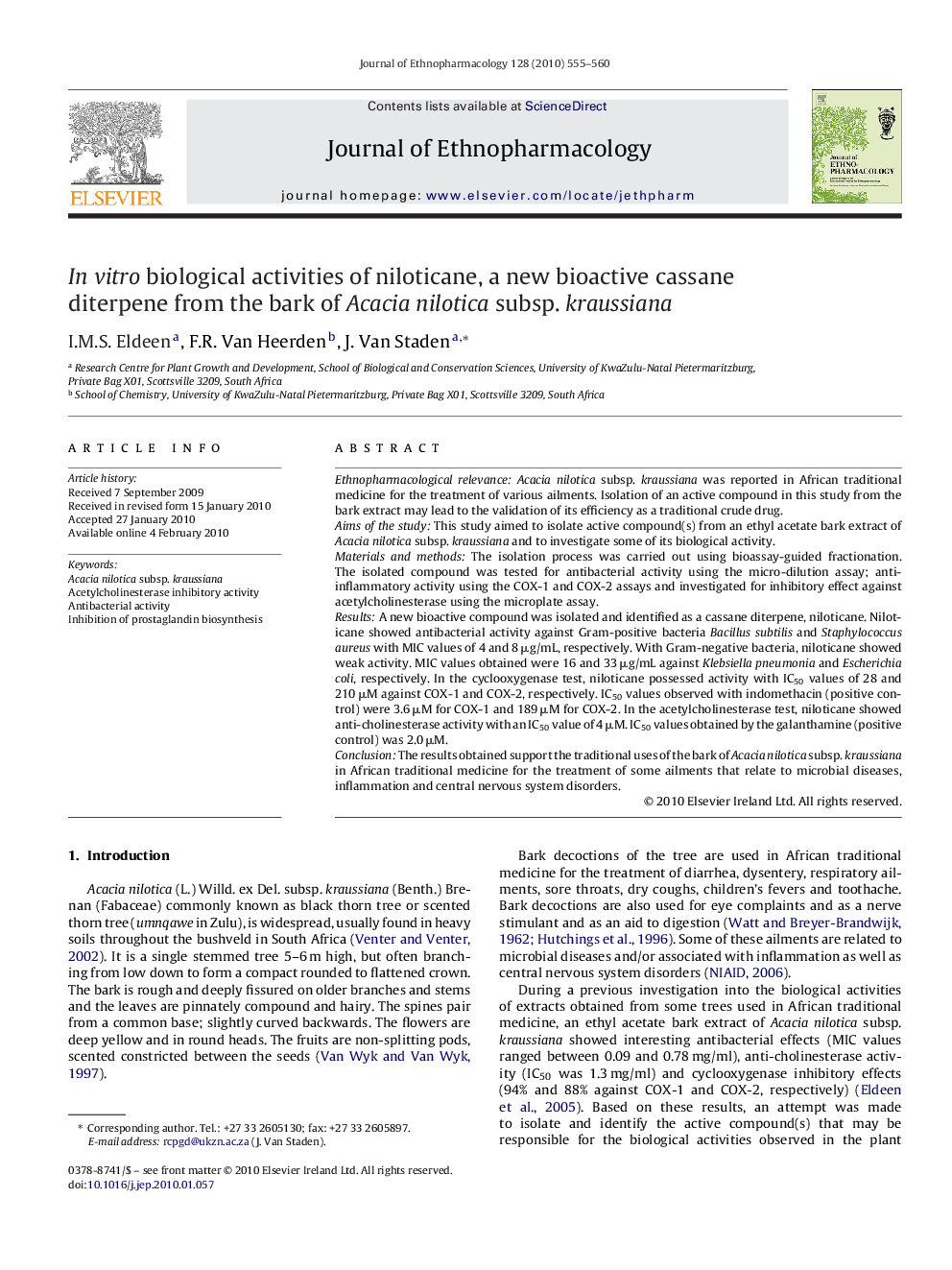| کد مقاله | کد نشریه | سال انتشار | مقاله انگلیسی | نسخه تمام متن |
|---|---|---|---|---|
| 2546493 | 1124028 | 2010 | 6 صفحه PDF | دانلود رایگان |

Ethnopharmacological relevanceAcacia nilotica subsp. kraussiana was reported in African traditional medicine for the treatment of various ailments. Isolation of an active compound in this study from the bark extract may lead to the validation of its efficiency as a traditional crude drug.Aims of the studyThis study aimed to isolate active compound(s) from an ethyl acetate bark extract of Acacia nilotica subsp. kraussiana and to investigate some of its biological activity.Materials and methodsThe isolation process was carried out using bioassay-guided fractionation. The isolated compound was tested for antibacterial activity using the micro-dilution assay; anti-inflammatory activity using the COX-1 and COX-2 assays and investigated for inhibitory effect against acetylcholinesterase using the microplate assay.ResultsA new bioactive compound was isolated and identified as a cassane diterpene, niloticane. Niloticane showed antibacterial activity against Gram-positive bacteria Bacillus subtilis and Staphylococcus aureus with MIC values of 4 and 8 μg/mL, respectively. With Gram-negative bacteria, niloticane showed weak activity. MIC values obtained were 16 and 33 μg/mL against Klebsiella pneumonia and Escherichia coli, respectively. In the cyclooxygenase test, niloticane possessed activity with IC50 values of 28 and 210 μM against COX-1 and COX-2, respectively. IC50 values observed with indomethacin (positive control) were 3.6 μM for COX-1 and 189 μM for COX-2. In the acetylcholinesterase test, niloticane showed anti-cholinesterase activity with an IC50 value of 4 μM. IC50 values obtained by the galanthamine (positive control) was 2.0 μM.ConclusionThe results obtained support the traditional uses of the bark of Acacia nilotica subsp. kraussiana in African traditional medicine for the treatment of some ailments that relate to microbial diseases, inflammation and central nervous system disorders.
Journal: Journal of Ethnopharmacology - Volume 128, Issue 3, 21 April 2010, Pages 555–560